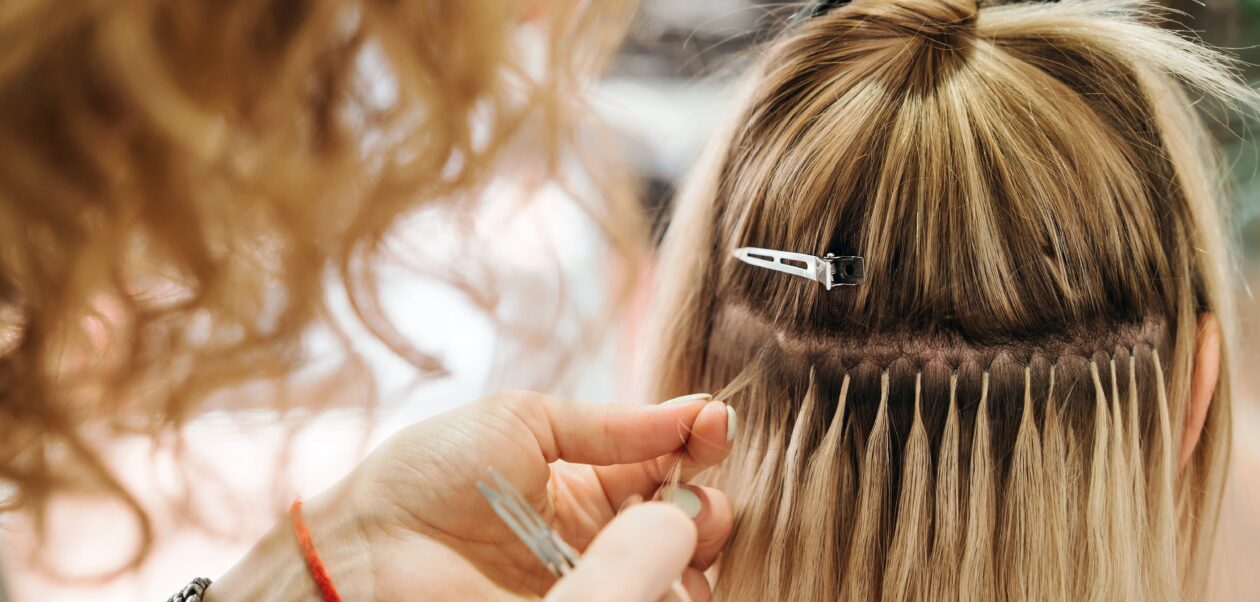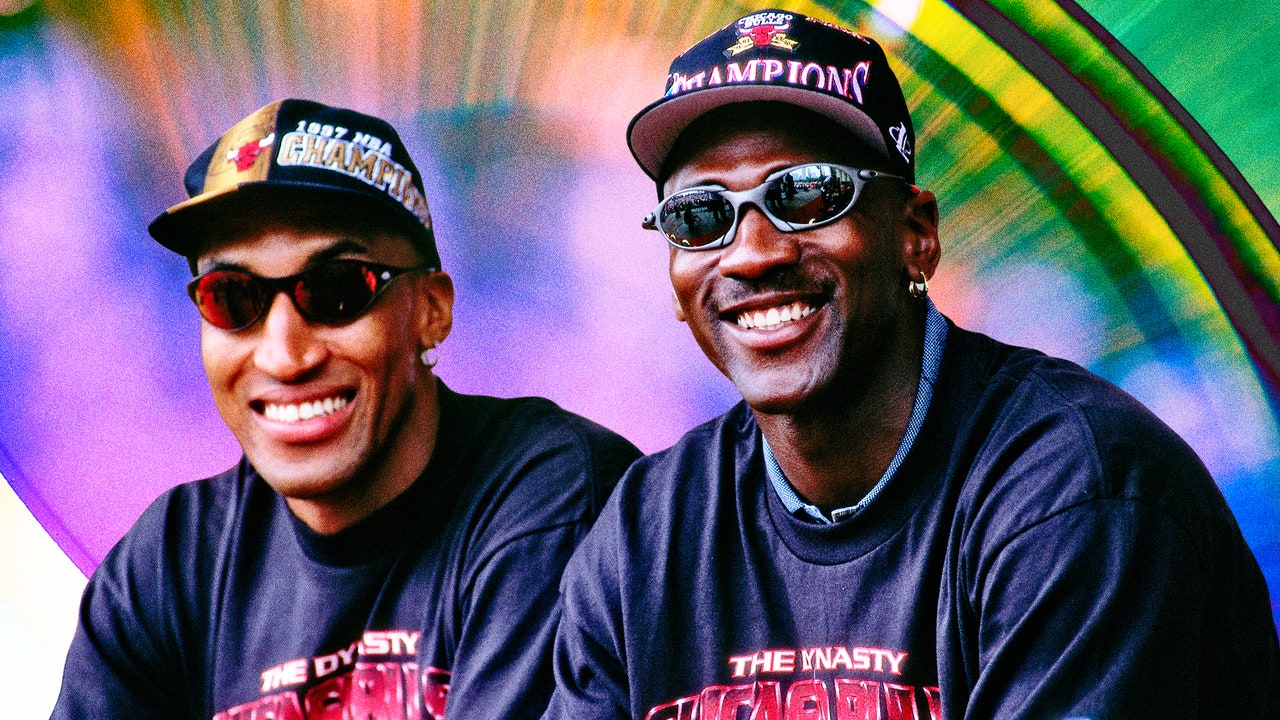Whether you have thin hair that you’re looking to bulk up, short hair that you want to lengthen, or are just in the mood to switch up your hairstyle without the commitment of a more permanent change, hair extensions are a great choice.
The topic of hair extensions is vast and complex. There are a variety of different types of hair extensions — like hand-tied extensions, microlinks hair extensions, tape-in extensions, clip-in hair extensions, and halo hair extensions, to name just a few — and each kind has its own list of perks and drawbacks. Aside from the cost of hair extensions, you’ll also want to know how to properly care for your hair extensions and how long they’ll last before committing.
If you’re considering trying hair extensions for thin hair for the first time, we’re sharing everything you need to know so you can find the best hair extensions for your needs with the help of four experts below. They help us break down the cost of hair extensions as well as all of the different types. Keep scrolling to learn more.
Experts Featured in This Article
Louise Bailey is the founder of Hair Extensions London.
Julia Venturin is a hair-extension expert at Luxy Hair.
Tatiana Karelina is the owner of Russian hair-extensions company Tatiana Karelina.
Brynn Reed is the lead extension specialist at Mirror Mirror Salon.
Types of Hair Extensions
“There are many different hair types and application methods available, so you can experiment until you find the perfect look for you at a price point that suits your budget,” Louise Bailey, founder of Hair Extensions London, says. Before we get into the different application types, let’s go over the two main categories of hair extensions: real human hair extensions and synthetic hair extensions.
“Human hair extensions are exactly what they sound like — they are made out of real, human hair from top to bottom, collected from a donor,” says Julia Venturin, a hair-extension expert at Luxy Hair. “Remy hair means all the cuticles (the outer layer of the hair) are intact, running in the same direction at the time of collection. This allows for almost no tangling and ensures that the extensions remain smooth and silky throughout their lifetime.”
Synthetic hair extensions, on the other hand, are made out of various synthetic, blended fibers — no human hair. “These fibers are usually very fine, plastic fibers that are manufactured to imitate real human hair,” Venturin says.
Here, we’re breaking down a few of the most common types of extensions.
Clip-In Hair Extensions
Clip-ins are perhaps the easiest, least time-consuming way of adding length, thickness, and volume to your hair, and one of the best things about them is that you don’t even have to see a professional to have them installed.
“The good, quality clip-ins will look and feel natural, they will last years, there is no commitment, and you can fit and style them yourself,” says Tatiana Karelina, owner of Russian hair-extensions company Tatiana Karelina.
These types of extensions clip to your hair, and they come in handy when you want to change up your hair for a particular event or occurrence and don’t want to commit to something more permanent. (You typically take them out after a day but can continue to reuse them for long after that.) Nowadays, clip-ins come in all kinds of lengths, textures, and colors, and you can usually buy them in packs. For an editor-approved option, read our full review of Bellami hair extensions; the brand has plenty of weft hair extension options.
Tape-In Hair Extensions
Tape-ins are considered semipermanent extensions; they’re similar to clip-ins except that they can last longer and are taped to your hair. They’re also pretty weightless, so you don’t feel weighed down even if you’re wearing a head full of them.
“Tape-ins are applied by a professional and can last for two months before needing maintenance,” says Bailey. “The hair is reusable with this method.”
Microlink Hair Extensions
Microlinks — also called microrings or microbeads — are a popular alternative option to sew-in weaves and tape-in extensions. These are normally attached to strands of hair using small tubes or rings, and they are said to be safer than other kinds of extensions because they don’t damage the hair and scalp by putting too much weight or stress on them. They also don’t require the use of glue or adhesive, making them a lot less noticeable in your hair.
One downside, depending on how you look at it, is that getting a full head of microlink hair extensions can take anywhere from one to five hours to complete, but they can last up to two to three months.
Sew-In Weaves
Installing a weave is a process that requires a bit more labor. They’re usually installed by a hairstylist who braids the hair down into a specific pattern — either what’s known as a beehive or straight-back cornrows — before sewing bundles or “tracks” down to the braids. This can usually take anywhere from two to six hours, depending on how many bundles you’re installing (two or three is a good amount) and how speedy your stylist is.
Weaves can last anywhere from six to 10 weeks, though it’s important for people who wear them to also make sure they’re still regularly taking care of their hair that’s beneath the weave.
Keratin Bond/Pre-Bonded Hair Extensions
Keratin extensions are also known as k-tip extensions. Bonds are fused to the hair using keratin and a heat gun. This process can take a few hours to complete since, like microlinks, each extension is connected to your natural hair individually until the desired look has been achieved. These aren’t permanent, but they do last up to four or five months, depending on personal maintenance.
UV Hair Extensions
LED or UV hair extensions are touted as the most seamless extension technique to date. To get the look, single strands of hair will be bonded onto your natural pieces of hair, using a special glue that will then be cured with a UV light to keep everything in place. How long the process takes depends on how large the area that you’re working with is, and the results last for about six weeks. The cost is usually about $250 per session and approximately $1200 for your entire head.
Halo Hair Extensions
If you’re looking for a quick and easy way to add length to your hair, you might want to consider Halo hair extensions. The extensions use a thin wire to secure the hair around the crown of your head, and your natural hair goes over it. They’re easy to put on and take out, which makes them perfect if you want to add a little extra length and thickness for a special event. There are a few different brands that make this type of hair extension, like Zala Hair Extensions and Luxy. Read our full Luxy Halo Hair Extensions review.
Do Hair Extensions Damage Your Natural Hair?
Sadly, there’s a lot of misinformation out there about hair extensions, including that they will damage your natural hair. In fact, this notion is mostly false. Bailey explains that when applied by a professional and cared for properly, damage is not likely. “If you’re considering getting hair extensions, it’s important to do your research and consult with a hair-extensions expert to ensure that they’re right for you and the correct hair type and product is used,” she says.
How to Care For Hair Extensions
Hair extensions require special care. The better you care for them, the more use you’ll get out of them. The No. 1 rule of handling hair extensions is to be gentle. “Brush them gently with a soft-bristled brush, and avoid using harsh chemicals or too much heat,” says Bailey. Venturin adds: “The more you wash and heat style your extensions, the shorter their lifespan will be, so try to keep the washing and product use to a minimum.”
Nonsynthetic extensions can and should be washed just like the hair on your head. This helps prevent product, dirt, and oil buildup on the hair. “Use a mild shampoo and conditioner, keeping conditioners away from the attachment points,” Bailey says. However, just as you don’t want to overwash your own hair, try to avoid washing your extensions too much. “Unlike your own hair, which receives natural hydration from the oils on your scalp, hair extensions don’t have a natural hydration source,” says Venturin. “Therefore, keeping them hydrated is key to keeping them shiny and in good condition.”
Cost of Hair Extensions
If you’re wondering, how much do hair extensions cost? That’s a hard question to answer due to the many different types of hair extensions available on the market — hair extension prices are based on the hair you choose, as well as who installs it. “High-quality, hand-tied hair extensions will look more natural and last longer than synthetic extensions but require a higher cost to purchase and install,” says Brynn Reed, the lead extension specialist at Mirror Mirror Salon.
Quality extensions made from human hair, such as clip-ins, typically range from $100 to $350, while more “permanent,” long-wearing extensions that are professionally installed can cost $350 to upward of $2,000. Synthetic hair extensions, on the other hand, are far cheaper.
Things to Keep in Mind When Getting Hair Extensions
There are many benefits to extensions, but you should consider your current hair routine to determine if they’re right for you. “Extensions are not a wash-and-go style,” says Reed. “They must be blow-dried. Leaving extensions wet for prolonged periods causes the wefts to break down and shortens the lifespan of your extensions. If you commit to extensions, you commit to the blow-out.”
Additionally, the haircut you have matters. Extensions are able to add volume and length to your existing style, but in order for the final result to look seamless, you’ll want to avoid any blunt-style haircuts. “This makes the job so much harder to blend,” says Bailey.
Jessica Harrington (she/her) is the senior editor of PS Beauty, where she oversees coverage around makeup, skin care, hair, tattoos, and more. With more than eight years of industry experience, she has interviewed countless celebrities, reported on hundreds of beauty trends, and swatched more lipsticks than she can count. Prior to PS, Jessica worked for publications such as Makeup.com, Skincare.com, and The Zoe Report.
Renee Rodriguez (she/her) is a staff writer and social producer for PS. She writes across all verticals, but her main areas of expertise focus on fashion and beauty content with an emphasis on reviews and editor experiments. She also produces social content for the PS TikTok and Instagram accounts.




